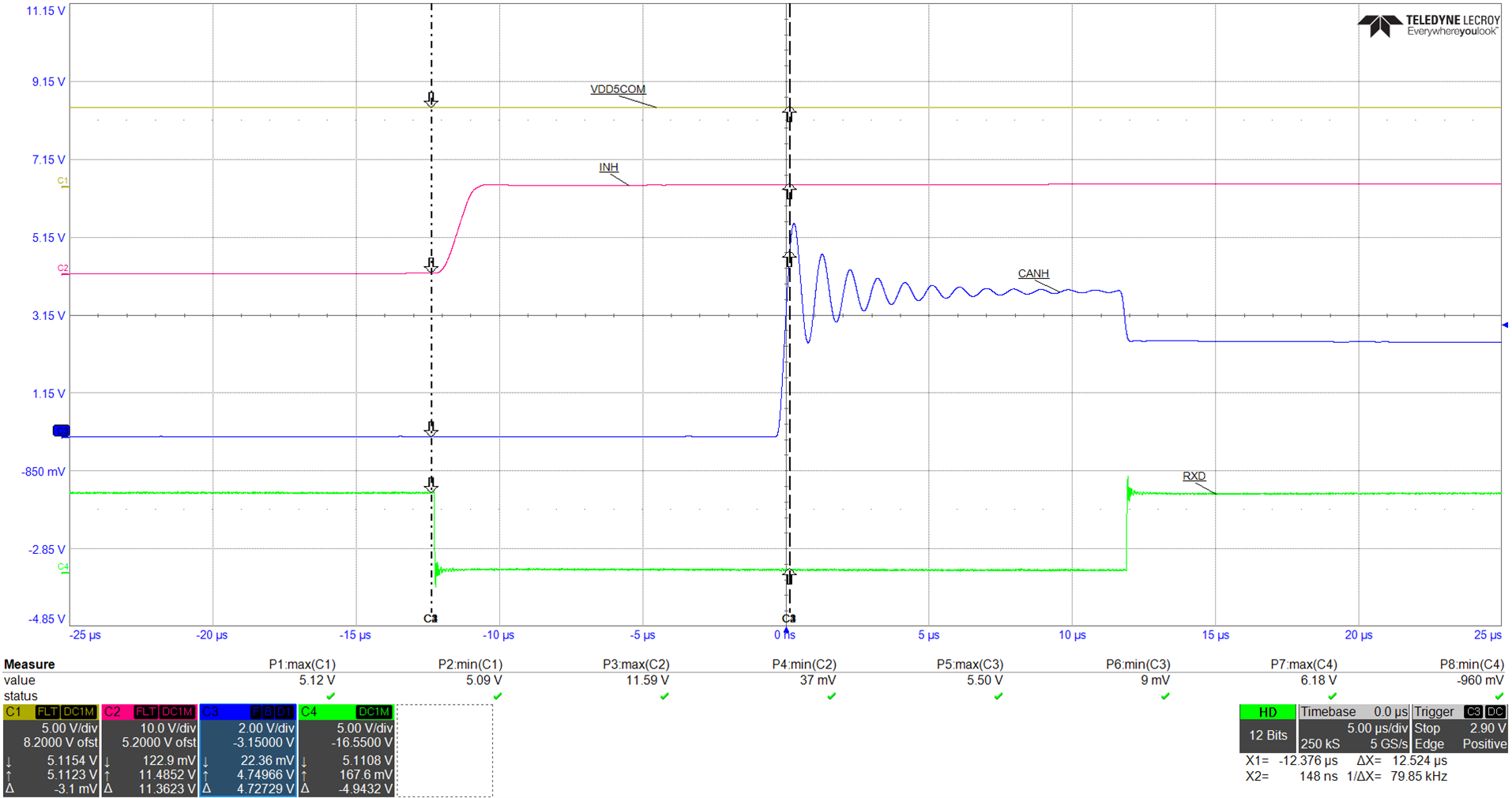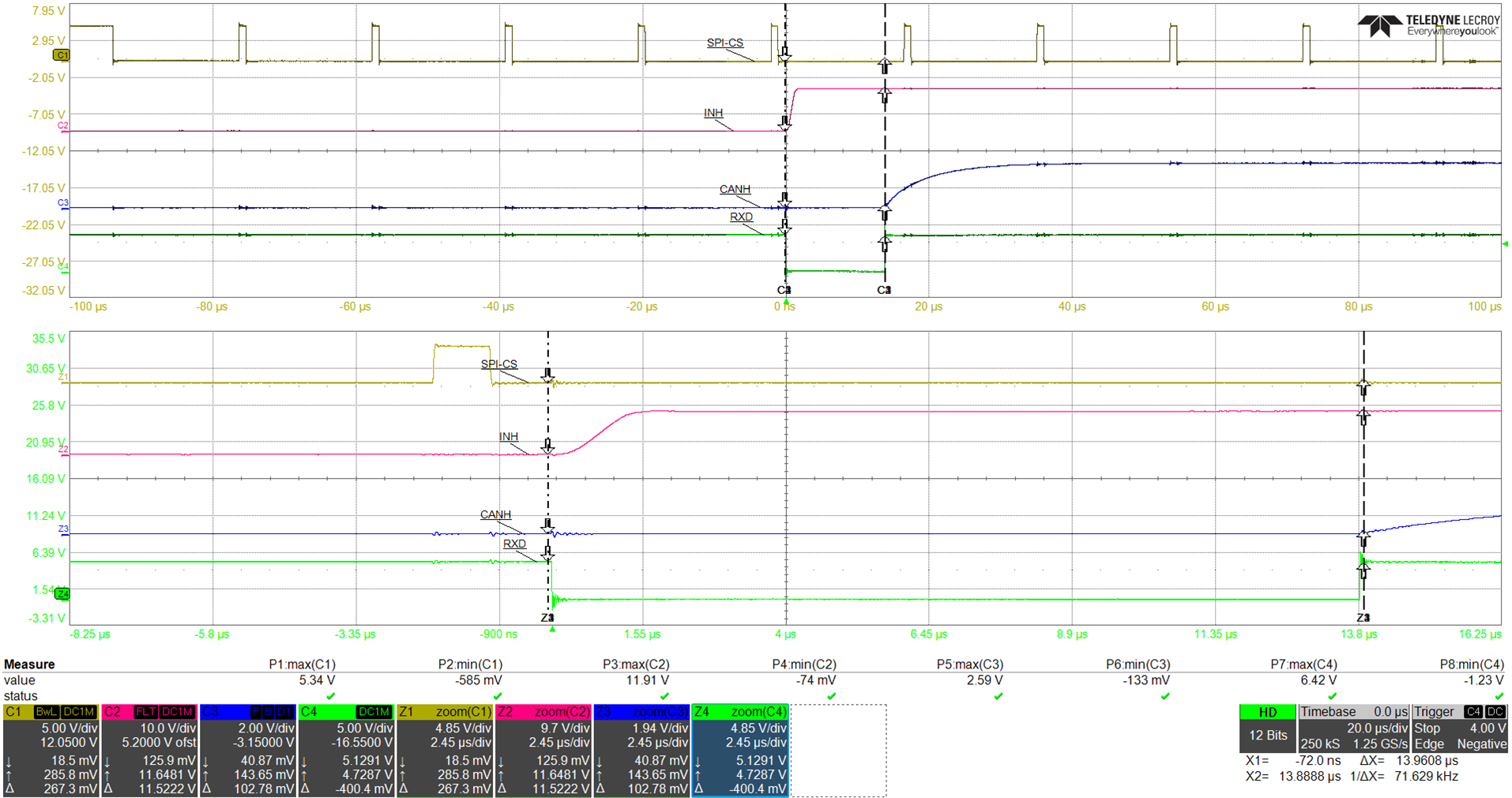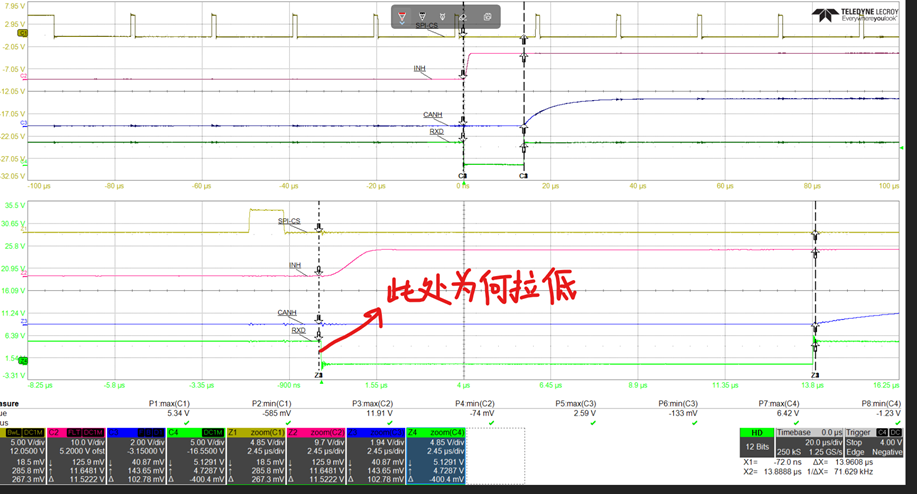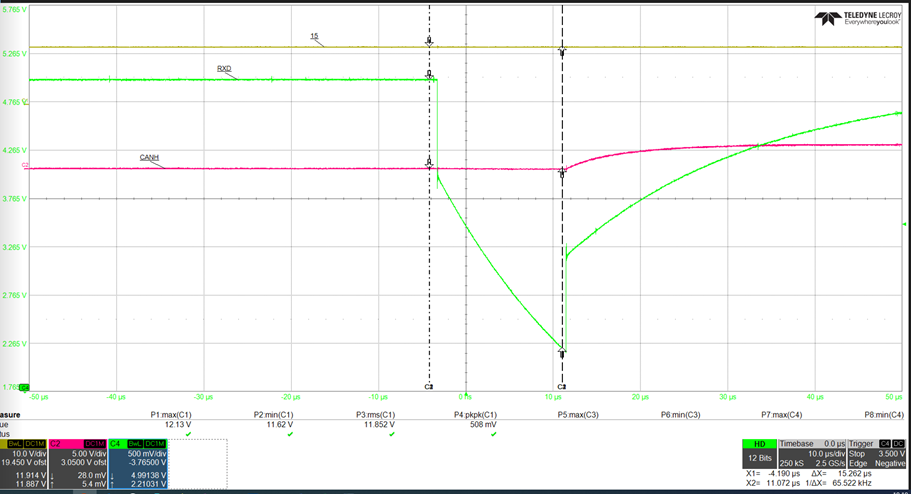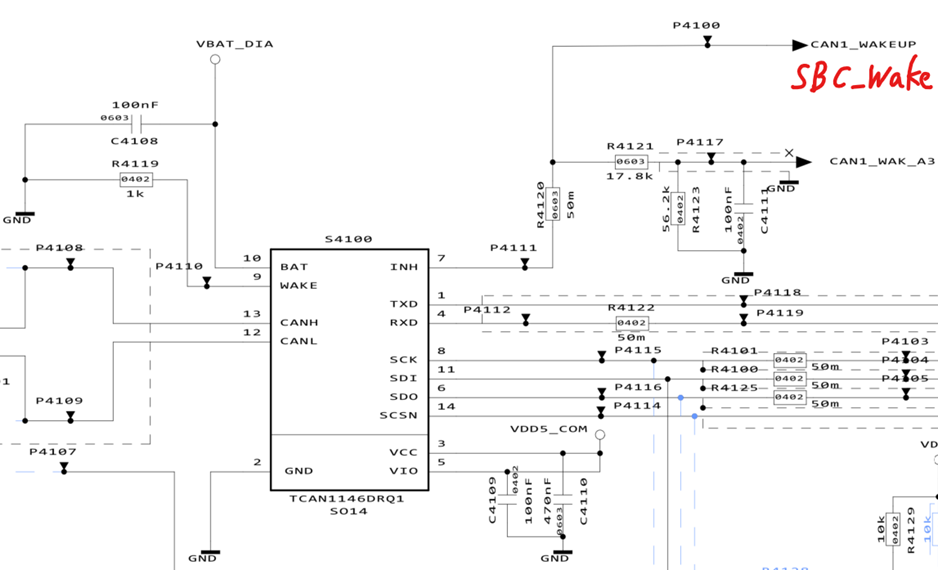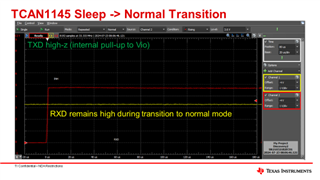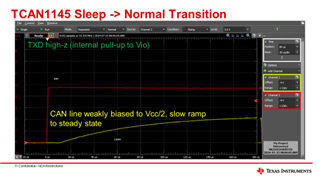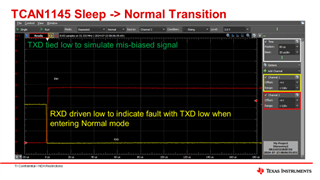Tool/software:
Hi team,
Customer is using TCAN1146 in their design, and use SPI to configure device status change from sleep mode to normal mode. They found RXD will be pull low as below. Would you please help share your comments why this happens?
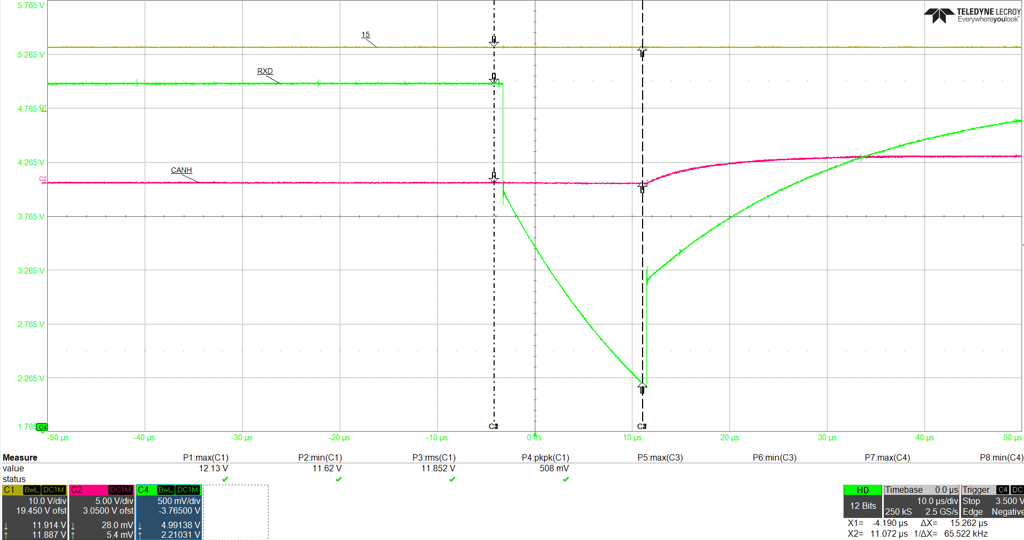
Thanks
Scarlett


